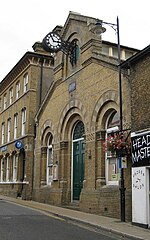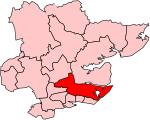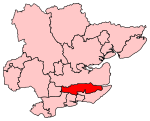Sutton is a village and civil parish in the District of Rochford in Essex, England. It is located between the River Roach and the adjoining Borough of Southend-on-Sea, and includes the hamlet of Shopland. It has a population of 127, increasing at the 2011 Census to 135, the smallest in the District, although at the time of the Domesday Book it had a flourishing village with its own market and fair.The place-name 'Sutton' is first recorded in the Domesday Book of 1086, where it appears as Suttuna. The name means 'southern town or settlement'.The place-name 'Shopland' is first attested in a list of c. 1000 AD of the manors of St Paul's Cathedral in Corpus Christi College, Cambridge (MS. 383), where it appears as Scopingland. It appears as Scopelanda in the Domesday Book of 1086, and as Scopiland in the Feet of Fines in 1208. The name means 'island with a shed', the first element being the Old English sceoppa, or the Middle English schoppe, meaning 'shop' or 'shed', the origin of the modern word 'shop'.The area is known locally as Sutton with Shopland. Most of the civil parish of Shopland was amalgamated with Sutton in 1933. When St Mary Magdalene's church in Shopland was demolished in 1957 following wartime bomb damage, artifacts were removed and went to Sutton Church and others. Shopland churchyard is rededicated every year. Sutton Road (B1015) is approximately 3 miles (5 km) long and runs from the Anne Boleyn Public House on Southend Road in Rochford to Southchurch Road in Southend-on-Sea.
Sutton is rural with large farms, and is bordered by industrial estates on its northern (Purdeys Industrial Estate) and southern (Chandlers Way/Temple Farm Industrial Estate) borders.











